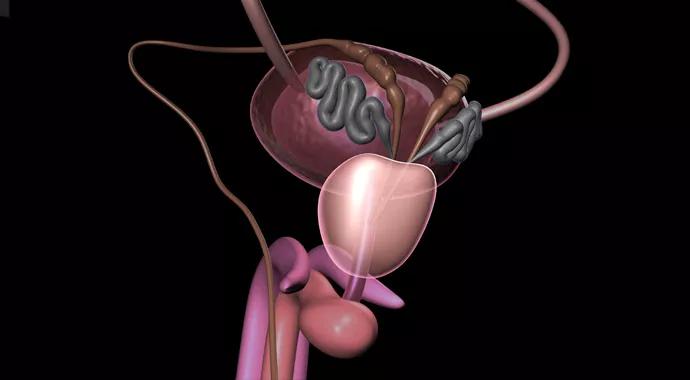Preliminary results suggest advantages for robotic prostatectomy

Advertisement
Cleveland Clinic is a non-profit academic medical center. Advertising on our site helps support our mission. We do not endorse non-Cleveland Clinic products or services. Policy
The treatment of locally recurrent prostate cancer after radiation therapy is difficult, as an ideal option remains elusive. The current treatment options include surgical removal, additional radiation therapy, ablative therapies (cryoablation, high-intensity focused ultrasound) or observation with androgen ablation.
All these options carry significant morbidity that impacts patients’ quality of life. The only option that minimizes functional complications is observation and expectant androgen ablation. This is not a curative choice, however, and if the patient is interested in eradication of the tumor, one of the other more invasive options must be undertaken.
Very little data exist on the optimal treatment. Most retrospective studies report a prostate specific antigen (PSA) control rate of approximately 50 percent at two years. As a result, most urologists tend to recommend what is perceived to be the least invasive treatment: ablative therapies.
Salvage prostatectomy was always considered the most invasive option, but the advent of robotics in surgery has greatly diminished complications.
We reviewed oncologic outcomes and toxicity in patients who underwent either salvage prostatectomy or cryotherapy treatments at Cleveland Clinic Florida to determine if robotic salvage prostatectomy could offer similar outcomes to cryoablation, a procedure that has been presumed to be less morbid than surgery.
We reviewed cases from January 2004 to June 2013 and identified a total of 23 salvage procedures. Six of those patients underwent salvage robotic prostatectomy while 17 underwent salvage cryotherapy.
Advertisement
Patients who were considered for salvage therapy had localized disease at presentation, a PSA < 10 at recurrence, life expectancy > 10 years at recurrence and a negative metastatic workup. Patients were followed postoperatively to observe for cancer progression and any toxicity of treatment or complications. The mean follow-up period for salvage cryotherapy patients was 14.1 months and for prostatectomy patients was 7.2 months.
The incidence of disease progression was 23.5 percent and 16.7 percent after salvage cryotherapy and prostatectomy, respectively. The overall complication rate also was 23.5 percent after salvage cryotherapy versus 16.7 percent after prostatectomy, with the most frequent complication after salvage cryotherapy being urethral stricture and after salvage prostatectomy being severe urinary incontinence.
There were no rectal injuries with salvage prostatectomy and only one rectourethral fistula in the cohort after salvage cryotherapy. Patients who underwent salvage cryotherapy were statistically older and had a higher incidence of hypertension than did the salvage prostatectomy cohort.
Our outcomes review found that salvage procedures were generally safe and effective. Both salvage cryotherapy and salvage prostatectomy allow for adequate cancer control with minimal toxicity.
The complication rates for salvage robotic prostatectomy appeared no worse than for patients treated with salvage cryoablation. Robotic salvage prostatectomy potentially has fewer local complications (stricture disease) than does cryotherapy, and urinary incontinence can be managed with new options (e.g., artificial urinary sphincter implants), enabling us to treat patients’ disease while preserving their quality of life.
Advertisement
At Cleveland Clinic Florida we are further analyzing these encouraging results to determine if a definitive advantage of one procedure over the other exists. We believe this will lead to better management of patients diagnosed with locally recurrent prostate cancer after radiation therapy.
Dr. Muruve is a staff member of Cleveland Clinic Glickman Urological & Kidney Institute’s Department of Urology who practices at Cleveland Clinic Florida.
Advertisement
Advertisement

First-of-its-kind research investigates the viability of standard screening to reduce the burden of late-stage cancer diagnoses

Global R&D efforts expanding first-line and relapse therapy options for patients

Study demonstrates ability to reduce patients’ reliance on phlebotomies to stabilize hematocrit levels

A case study on the value of access to novel therapies through clinical trials

Findings highlight an association between obesity and an increased incidence of moderate-severe disease

Cleveland Clinic Cancer Institute takes multi-faceted approach to increasing clinical trial access 23456

Key learnings from DESTINY trials

Overall survival in patients treated since 2008 is nearly 20% higher than in earlier patients